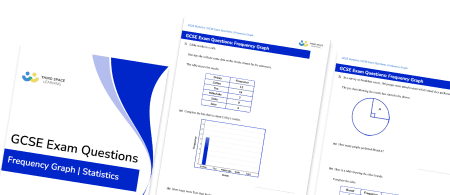FREE DOWNLOAD
Scatter Graphs Worksheet

Help your students prepare for their Maths GCSE with this free scatter graphs worksheet of 15 questions and answers
- Section 1 of the scatter graphs worksheet contains 9 skills-based scatter graphs questions, in 3 groups to support differentiation
- Section 2 contains 3 applied scatter graphs questions with a mix of worded problems and deeper problem solving questions
- Section 3 contains 3 foundation and higher level GCSE exam style questions on scatter graphs
- Answers and a mark scheme for all scatter graphs questions are provided
- Questions follow variation theory with plenty of opportunities for students to work independently at their own level
- All questions created by fully qualified expert secondary maths teachers
Suitable for GCSE maths revision for AQA, OCR and Edexcel exam boards
Unlock access to download your free resource
You can unsubscribe at any time (each email we send will contain an easy way to unsubscribe). To find out more about how we use your data, see our privacy policy.
Scatter graphs at a glance
A scatter graph or scatter diagram is used to display two sets of data and examine the relationship between them – a connection between two sets of data or variables is called correlation.
When plotting scatter graphs, the independent variable is plotted on the x axis, and the dependent variable on the y axis. For example, when looking for a correlation between ice cream sales and temperature, we would plot temperature on the x axis. Each point is plotted in the usual way – x value, followed by y value. Students should be encouraged to count the number of points given in the question, and then the number of points they have drawn on their graph as an error check.
There are two types of correlation. Positive correlation means that, as one variable increases, so does the other. A straight line of best fit drawn on a scatter graph with positive correlation runs from the bottom left of the graph to the top right, and has a positive gradient. Negative correlation means that, as one variable increases, the other decreases. The line of best fit runs from the top left of the graph to the bottom right, and has a negative gradient. If the scatter graph shows no discernable pattern, we say there is no correlation.
It is important that students are aware that correlation doesn’t imply causation – in other words, just because there is a relationship apparent in the data, it doesn’t necessarily mean that one thing has caused the other.
A line of best fit can be used to estimate a value within the range of the data; this is called interpolation and is fairly reliable. Doing the same outside the data range is called extrapolation and is more unreliable.
Looking forward, students can then progress to additional Statistics worksheets, for example a mean, median, mode and range worksheet or frequency table worksheet.

For more teaching and learning support on Statistics our GCSE maths lessons provide step by step support for all GCSE maths concepts.
Do you have GCSE students who need additional support?

There will be students in your class who require individual attention to help them achieve their target GCSE maths grade. In a class of 30, it’s not always easy to provide.
Help your students feel confident with exam-style questions and the strategies they’ll need to answer them correctly with personalised online one to one tutoring from Third Space Learning
Lessons are selected to provide support where each student needs it most, and specially-trained GCSE maths tutors adapt the pitch and pace of each lesson. This ensures a personalised revision programme that raises grades and boosts confidence.








